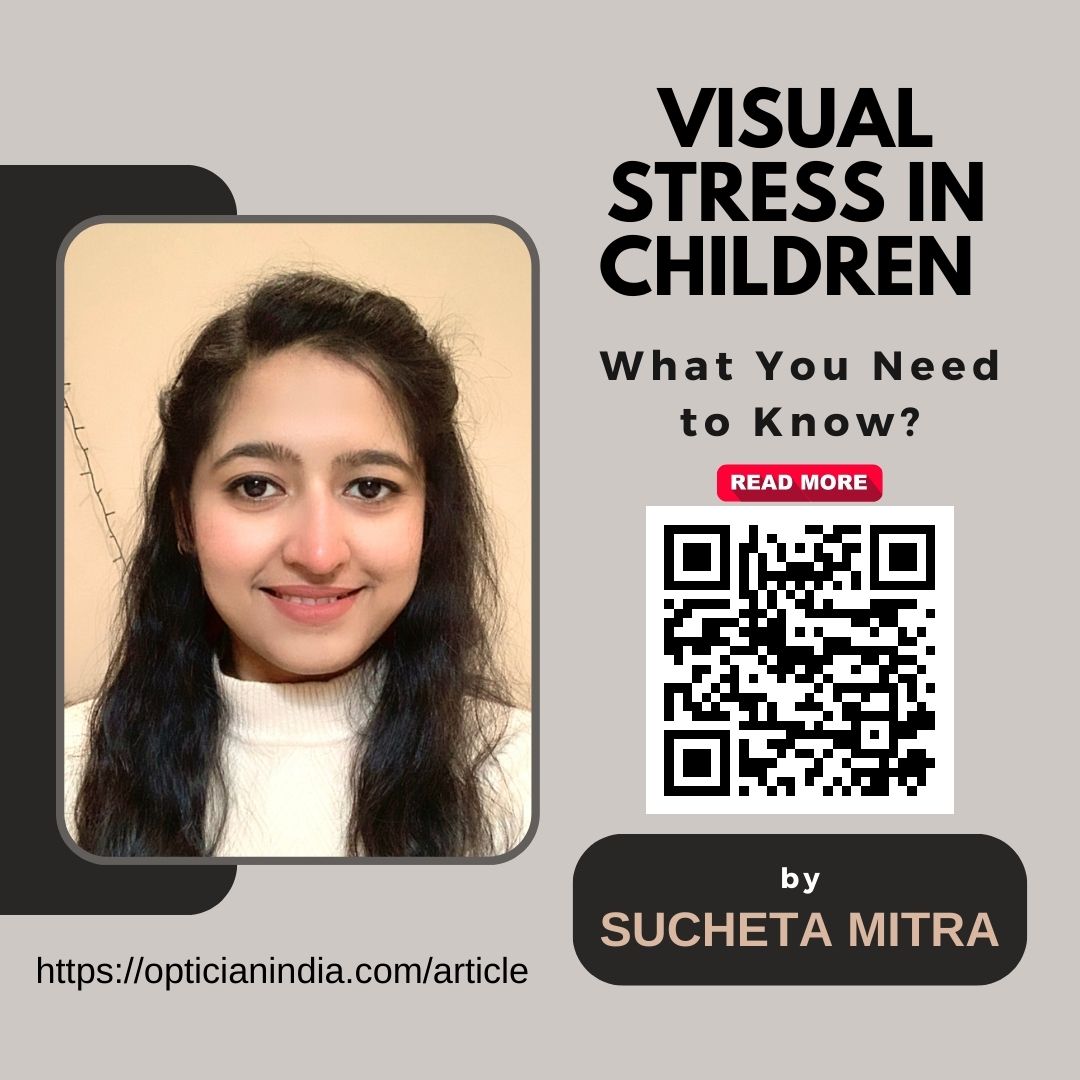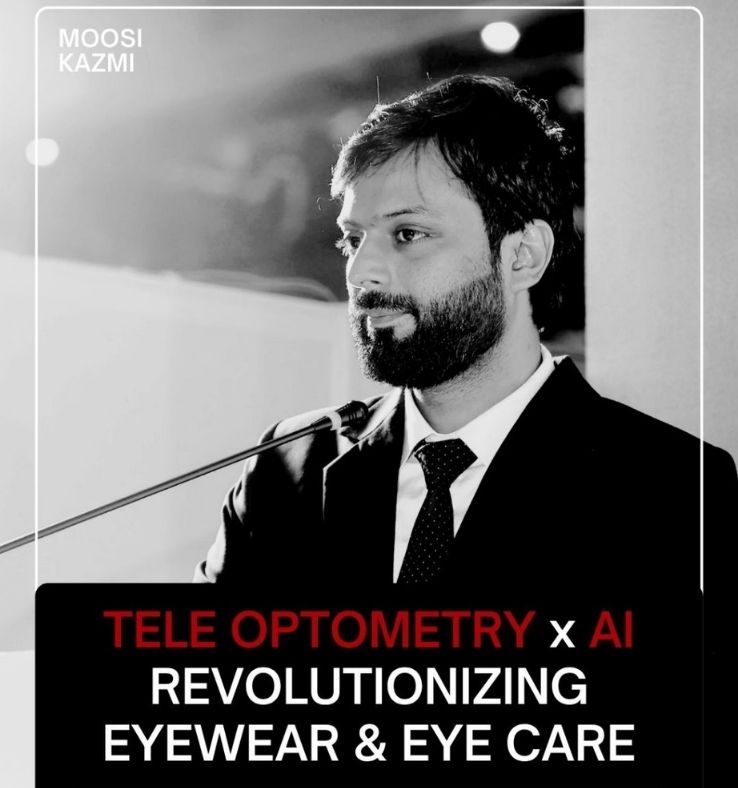VISUAL STRESS IN CHILDREN WHAT YOU NEED TO KNOW

For children, school is a critical period of their lives, as they spend about 40% of their waking hours in this setting(1). It is no secret that reading plays a crucial role in a child's academic success, and children who struggle with reading often lag behind their peers, with these disparities continuing over time(2). However, what many parents and educators fail to recognize is that a condition called visual stress, also known as Meares-Irlen Syndrome, can have a significant impact on a child's ability to read and succeed in school.
Visual stress or Meares-Irlen Syndrome is a condition characterised by asthenopic symptoms (like eyestrain, headache, and fatigue) and visual perceptual distortions (like blurring or moving of text), diplopia(3,4), visual confusion, although it is suggested that reading and spelling errors are caused by poor binocular control(5). Although visual stress is estimated to affect about 20% of people, it is often not recognised or misdiagnosed as a reading disorder or a symptom of a learning disability(6).
This is primarily because interventions for visual stress are not incorporated into professional or student education. Although many people who experience visual stress fall within the normal range of IQ, professionals frequently advise parents that they are being "over-anxious" or that they should accept that their child is underachieving(7).
In 1983, Irlen coined the term "Scotopic sensitivity syndrome," describing it as perceptual dysfunction related to difficulties with light source, luminance, wavelength, and color contrast(8). Although Irlen suggested tinted lenses to treat patients with reading difficulty, they have been criticised owing to a lack of literature(9). Visual stress has been associated with several neurological conditions, such as migraine, autism, epilepsy, stroke, and multiple sclerosis, and it is believed to be a neurological disorder that co-occurs not just with reading difficulties but also with neurological conditions(10). It had been suggested that the underlying anomaly in visual stress is a hyperexcitability of the visual cortex, possibly due to impaired gain control mechanisms, and that the effects of this can be mitigated in a variety of ways, including by altering the design and layout of printed text and by using color(11,12).
According to the theory developed by Wilkins, visual stress is based upon the three properties of natural images(13): negligible flicker, luminance, and color contrast. Fluorescent lamps and LED lighting tend to fluctuate rapidly in color and brightness, which interferes with the neural processing involved in realigning the eyes after each saccade. The saccadic movement of the eye is directly proportional to the frequency of the flicker produced by lighting, resulting in headaches, eyestrain, and visual discomfort. Two-dimensional images such as plates and checks cause more discomfort than one-dimensional patterns such as stripes.
Certain visual patterns and frequencies can cause discomfort or even trigger migraines and seizures for some people. The researchers found that patterns with a spatial frequency of around 3 cycles per degree were particularly problematic,and recognised text as an ‘uncomfortable stimulus’. For some people who experience pattern glare, exposure to these patterns can cause headaches, migraines, and distortions in their perception of motion, shape, and color(11,13).
The Clinical features of Meares-Irlen syndrome include experiencing at least three of the following six typical symptoms: words appearing to move, words merging together, patterns or shadows in text, 3-D perception of text, fading or darkening of words or letters, and discomfort with artificial lights and flicker. Additionally, the diagnosis requires at least two of the following three signs from investigations:voluntary use of an overlay for three months or more, an improvement in performance at the Wilkins Rate of Reading Test (WRRT) by ≥15%, and a Pattern GlareTest result>3 with mid-spatial frequency grating(14).
 |
2023-07-12T12_51_28.jpg) |
It is important to note that a diagnosis of Meares-Irlen syndrome cannot be based solely on the presence of these symptoms, and a comprehensive evaluation by a qualified professional is necessary to confirm the diagnosis. Before making a diagnosis of Visual Stress (VS), eye care practitioners should first rule out any conventional optometric anomalies that could be causing the symptoms.These anomalies include refractive errors, binocular anomalies, or accommodative ano malies. It is essential to ensure that the symptoms are not being caused by these conventional issues before considering a diagnosis of VS.
To alleviate visual stress, colored overlays or lenses can be used. However, optometrist should always consider (Figure 3) the reasons behind choosing a coloured overlays on first visit.Coloured Overlays can reduce symptoms such as headaches, distortions, and movement of text, and improve reading speed and comprehension. Color filters can be personalized to the individual's needs, and they should be prescribed by a qualified professional. Lighting can also be modified to reduce flicker and glare, and paper and print can be modified to reduce discomfort(15).
11111122222.jpg) |
To summarize, visual stress can have a notable effect on a child's educational achievements. Despite being a prevalent condition, visual stress is frequently mistaken for learning and reading disabilities. It can be diagnosed through a comprehensive eye examination, which may include specific tests for Meares Irlen Syndrome. Educating parents and teachers about the symptoms of visual stress can assist children in obtaining the appropriate support and adaptations to excel academically.
References
1. Approaches to the provision of educational support for children and young peoplewith additional health and developmental needs Dyslexia.
2. O’Hare A. Dyslexia: what do paediatricians need to know? Paediatrics and ChildHealth 2010;20:338–43.
3. Alanazi MA, Alanazi SA, Osuagwu UL. Evaluation of visual stress symptoms in age-matched dyslexic, Meares-Irlen syndrome and normal adults. International Journal ofOphthalmology 2016;9:617–24.
4. Evans BJW. The need for optometric investigation in suspected Meares-Irlensyndrome or visual stress. Ophthalmic and Physiological Optics 2005;25:363–70.
5. Cornelissen P, Bradley L, Fowler S, Stein J. What Children See Affects How TheySpell. Developmental Medicine & Child Neurology 1994;36:716–26.
6. Evans BJW, Allen PM. Revisión sistemática de los ensayos controlados sobre estrésvisual utilizando filtros intuitivos o colorímetros. Journal of Optometry 2016;9:205–18.
7. Harries P, Perkins L, Parker C, Fowler L, Wignall S, Mangalpara E, Harries L.Supporting children with visual stress: The development of a web resource for parents and professionals. British Journal of Occupational Therapy 2014;77:626–33.
8. Irlen H. Reading by the Colors: Overcoming Dyslexia and Other Reading DisabilitiesThrough the Irlen Method. 2005;27:208.
9. Solan HA, Richman J. Irlen lenses: a critical appraisal. Journal of the AmericanOptometric Association 1990;61:789–96.
10. Wilkins AJ, Evans BJW. Vision, Reading Difficulties, and Visual Stress.; 2022.
11. Wilkins A. Visual stress: origins and treatment . CNS Journal 2021;6:1–8.
12. Wilkins A, Nimmo-smith I, Tait A, Mcmanus C, Sala S Della, Tilley A, Arnold K,Barrie M, Scott S. A neurological basis for visual discomforofneurology1984;107 ( Pt 4:989–1017.
13. Wilkins A. Chapter 17. A theory of visual stress and its application to the use ofcoloured filters for reading. Progress in Colour Studies 2018:319–39.
14. Evans BJW, Allen PM, Wilkins AJ. A Delphi study to develop practical diagnosticguidelines for visual stress (pattern-related visual stress). Journal of Optometry
2017;10:161.
15. Wilkins AJ, Evans BJW. Vision, Reading Difficulties, and Visual Stress. Vision,Reading Difficulties, and Visual Stress 2022.

.jpg)

.jpg)
.jpg)
.jpg)


1.jpg)



.jpg)
.jpg)



_(Instagram_Post).jpg)
.jpg)
_(1080_x_1080_px).jpg)


with_UP_Cabinet_Minister_Sh_Nand_Gopal_Gupta_at_OpticsFair_demonstrating_Refraction.jpg)
with_UP_Cabinet_Minister_Sh_Nand_Gopal_Gupta_at_OpticsFair_demonstrating_Refraction_(1).jpg)

.jpg)








.jpg)



.png)




